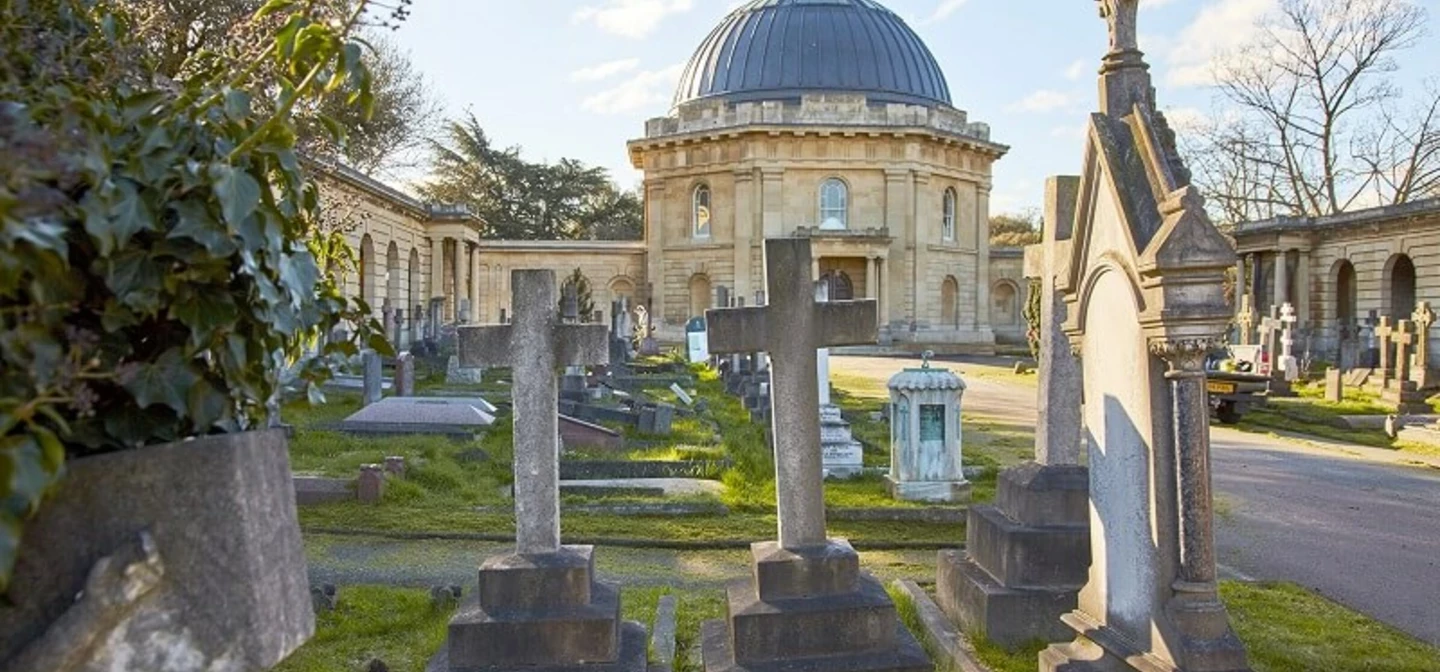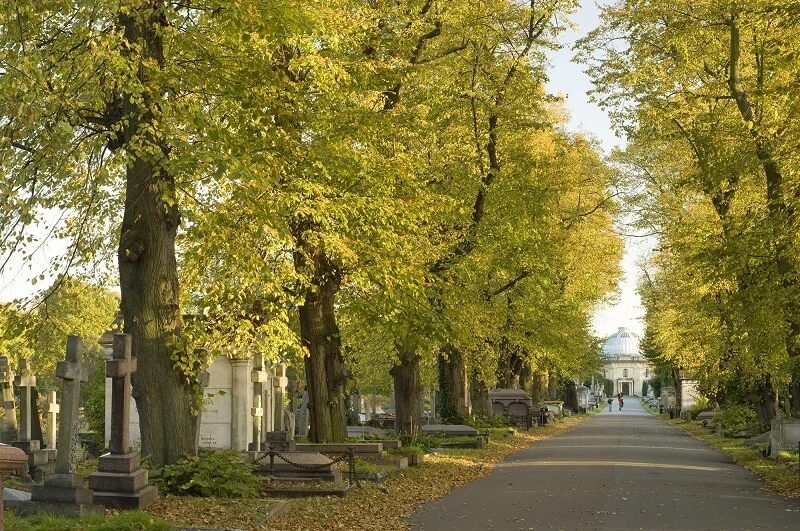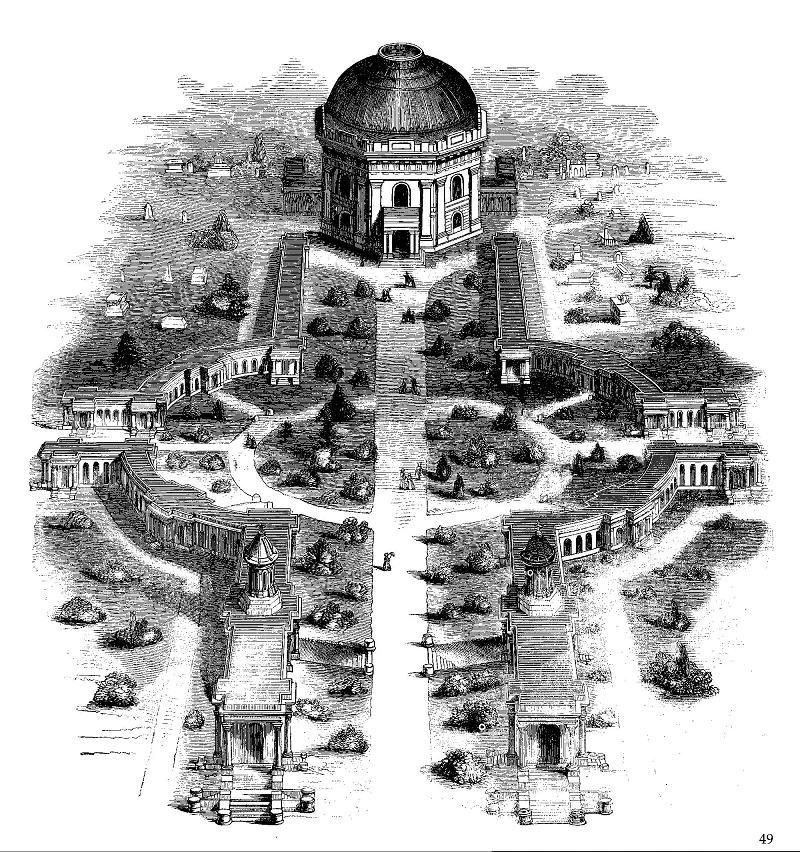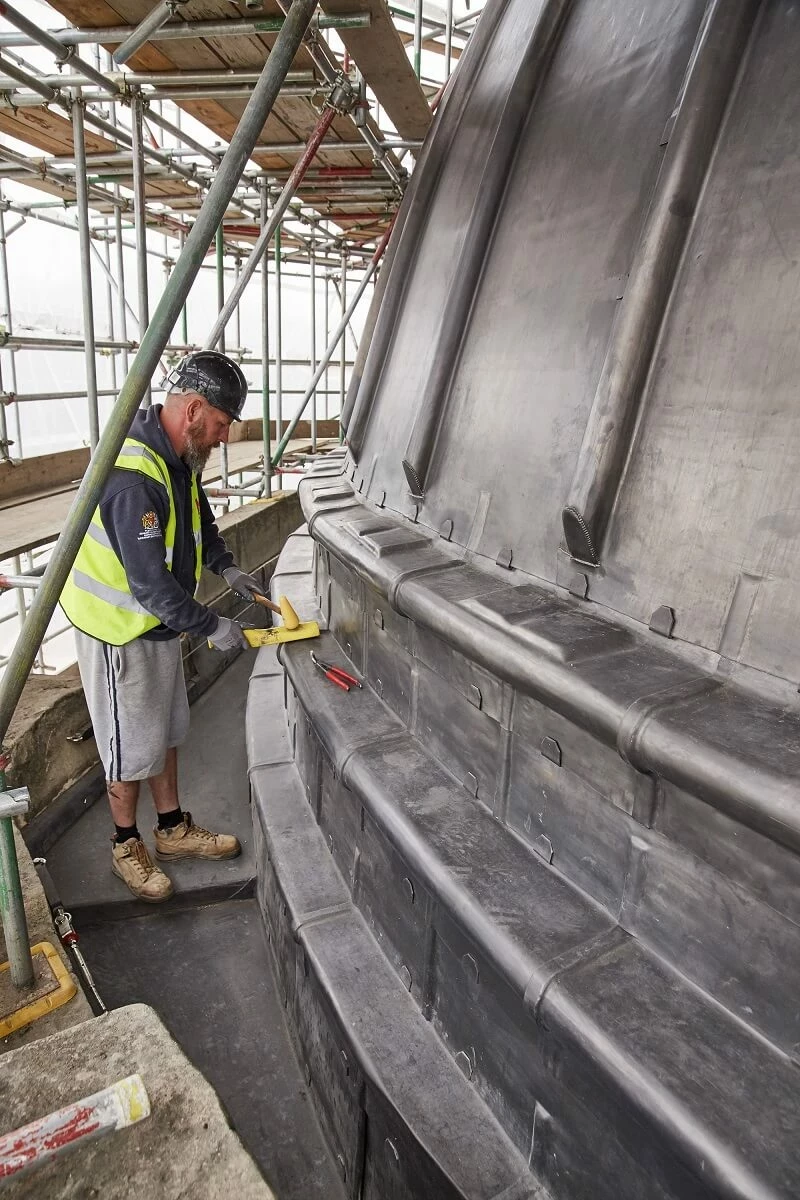
The Chapel (1842)
Three chapels were planned, but only this one was built.
The Central Avenue
The chapel, which stands at the head of the tree-lined Central Avenue, is the elegant focal point of the cemetery’s architecture. It was built to hold funeral services, and is still used for this and other activities and events. The angular, eight-sided building is said to represent life on earth, while its lofty dome suggests heaven.

Architectural scheme
The architectural scheme for the cemetery was ambitious, and the company developing the site couldn’t afford to deliver everything. They were forced to open the cemetery in 1840 before the chapel was built, so a temporary one had to be set up in the east wing of the North Lodge. The architect’s plans for two further chapels, either side of the Great Circle, were abandoned.

The Chapel restoration
The chapel was finally completed in 1842. It was constructed from prestigious cream-coloured Bath stone by Philip Nowell, a well-known London builder based in Pimlico. His firm was responsible for most of the cemetery buildings and boundary walls, as well as some of the beautiful squares and luxury residences at nearby Belgravia.
The chapel, listed Grade II* for its significance, was renovated as part of the major conservation project at the cemetery in 2017. This included repairing the lead-covered dome, restoring the elegant interior, and refitting the side rooms for offices and visitor services.


Inside the Chapel after restoration
Inside, the chapel has eight giant Corinthian columns arranged in a circle below the dome. The ornate ceiling is decorated with marigolds, and there are acanthus leaves around the edge of the dome.

The Mediterranean acanthus grew in the cemeteries of the ancient Greeks and Romans. Its leaves have been used ever since to symbolise the ‘garden of heaven’. By contrast, marigolds represented sadness for the Victorians, who often used flowers to convey hidden messages. A red rose meant ‘I love you’, a peony said ‘I’m angry with you’ and a blue hyacinth begged for forgiveness.